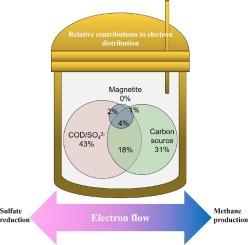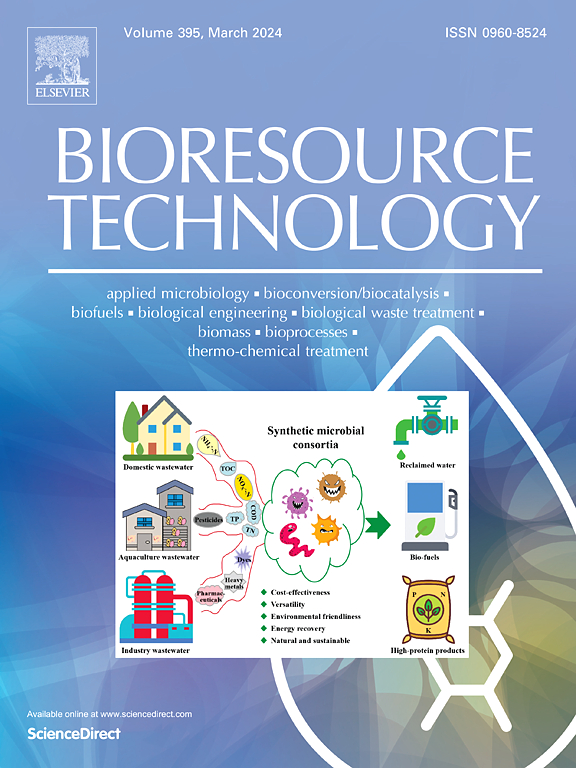Magnetite-mediating direct interspecies electron transfer is not pivotal role in directing electrons toward methane production from sulfate containing wastewater
IF 9.7
1区 环境科学与生态学
Q1 AGRICULTURAL ENGINEERING
引用次数: 0
Abstract
Sulfate reduction can compete for electrons with methane production, thereby reducing methane production. Several factors, such as magnetite addition, carbon sources, and the chemical oxygen demand (COD)/SO42− ratio, can influence the direction of electron flow toward methanogenesis. However, their contributions to methane production remain unclear. In this study, the addition of magnetite significantly enhanced the maximum methane production rate (Rmax). The enrichment of Methanothrix and Methanobacterium in the conductive material groups indicated the establishment of a methanogenesis process through direct interspecies electron transfer (DIET). Although the DIET pathway enhanced Rmax in the conductive material groups, this increase did not translate into a higher methane yield in this study. The contribution of DIET pathway to methane yield was negligible compared with the effect of COD/SO42− ratio and carbon sources. The relative contribution of COD/SO42− ratio exceeded 40 % in directing electron flow.

磁铁矿介导的种间直接电子传递在引导电子从含硫酸盐的废水中产生甲烷的过程中并没有发挥关键作用。
硫酸盐还原会与甲烷生成竞争电子,从而减少甲烷生成。磁铁矿的添加、碳源和化学需氧量 (COD)/SO42- 比率等多种因素都会影响电子流向甲烷生成的方向。然而,这些因素对甲烷产生的影响尚不明确。在本研究中,磁铁矿的添加显著提高了甲烷的最大生产率(Rmax)。导电材料组中 Methanothrix 和 Methanobacterium 的富集表明,通过种间直接电子传递(DIET)建立了甲烷生成过程。虽然 DIET 途径提高了导电材料组的 Rmax,但在本研究中,这种提高并没有转化为更高的甲烷产量。与 COD/SO42- 比率和碳源的影响相比,DIET 途径对甲烷产量的贡献可以忽略不计。COD/SO42- 比率在引导电子流方面的相对贡献超过 40%。
本文章由计算机程序翻译,如有差异,请以英文原文为准。
求助全文
约1分钟内获得全文
求助全文
来源期刊

Bioresource Technology
工程技术-能源与燃料
CiteScore
20.80
自引率
19.30%
发文量
2013
审稿时长
12 days
期刊介绍:
Bioresource Technology publishes original articles, review articles, case studies, and short communications covering the fundamentals, applications, and management of bioresource technology. The journal seeks to advance and disseminate knowledge across various areas related to biomass, biological waste treatment, bioenergy, biotransformations, bioresource systems analysis, and associated conversion or production technologies.
Topics include:
• Biofuels: liquid and gaseous biofuels production, modeling and economics
• Bioprocesses and bioproducts: biocatalysis and fermentations
• Biomass and feedstocks utilization: bioconversion of agro-industrial residues
• Environmental protection: biological waste treatment
• Thermochemical conversion of biomass: combustion, pyrolysis, gasification, catalysis.
 求助内容:
求助内容: 应助结果提醒方式:
应助结果提醒方式:


